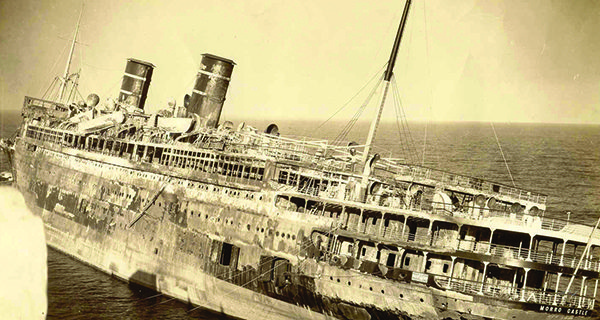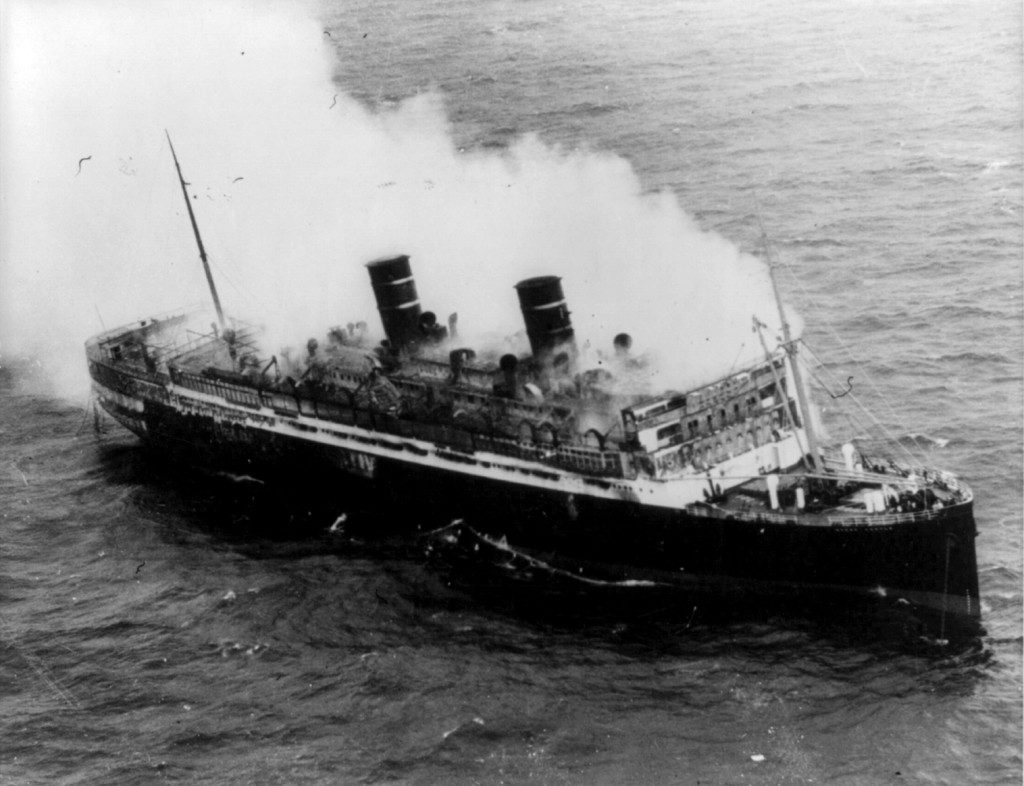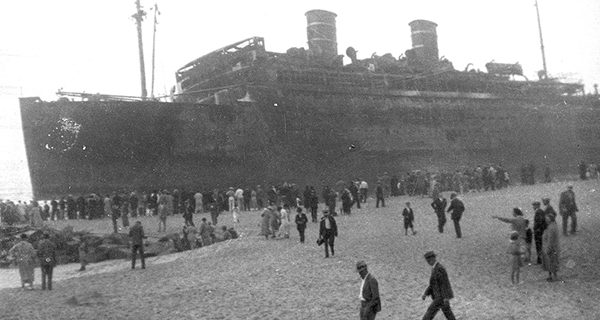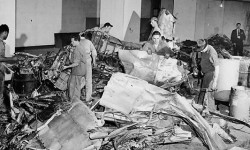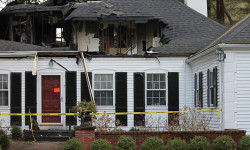[ccfic caption-text format="plaintext"]
By Bill Lombardi
Hometown Weekly Correspondent
William Wesley Tripp lived at 85 Pleasant Street in Boston with his mother, Jeannie. He attended Boston English, where he graduated with honors. He was accepted into Massachusetts Institute of Technology. As an 18 year-old sophomore, he sailed aboard the Morro Castle as a cadet engineer and was assigned to the engine room. It was part of his college curriculum to make one sailing.
The Morro Castle, a luxury liner, made vacation cruises back and forth from New York to Havana, Cuba, carrying pleasure-seekers. The ship would stop off at Havana and the passengers would go ashore and find excitement and entertainment. The Morro Castle was known as the “Floating Whorehouse”; women not on the passenger list were brought aboard to entertain the men. It had made 173 successful cruises.
In September 1934, during a return voyage carrying 318 passengers, a chain of events occurred that led up to one of the most horrifying nightmares in sea disaster history.
The captain, after eating a late supper, complained of indigestion. Before a doctor could be summoned, he died.
A few hours later, at approximately 2:30 a.m., while the ship was plunging through heavy seas along the New Jersey coast, a fire broke out in the library. Most of the passengers were sound asleep. Clouds of suffocating smoke began to fill the cabins, and travelers woke up choking. Thick smoke made it impossible for some to find doors, so they squeezed out through the portholes.
Even though the officers on the bridge received a report of smoke, it was passed on routinely. By the time an all-out alarm was sounded, the fire was out of control and had spread like wildfire. Bill Tripp and the men in the engine room, not realizing how serious things were on deck, continued working. At no time did they receive orders to stop the engines. The room filled up with smoke and they had to light matches to find their way out. When Tripp reached topside, flames were raging all around and the bridge was burning furiously.
The fire reached the gunpowder room and set off such an explosion that it rocked the ship and further intensified the fire. Tripp ran through the smoke-filled corridors and tried to help as many people as he could. Some men came by, dragging burned wives or friends who were screeching with pain. Tripp helped the screaming women into the lifeboats.
The crew’s effort in fighting the flames and the difficult time they had in lowering the lifeboats showed a lack of proper training. One lifeboat got jammed and was never lowered. When the deck of the ship became red hot, people jumped into the water, and some began swimming toward shore. Others tried to grab onto any nearby floating object. Tripp dove into the water and landed near a boat. He was pulled aboard.
A 20 year-old Cuban boy swam and battled the sea for hours before he collapsed on the New Jersey shore, exhausted. Other swimmers made it with the help of lifejackets and the strong wind blowing inland. Some who had been swimming for hours were unable to go on and drowned. Fishing vessels and Coast Guard cutters picked up survivors a short distance from land. Darkness and strong gales whipping up the sea added to the death toll.
Some boats manned by the crew failed to pick up passengers struggling in the water and headed to shore half-empty.
When the Coast Guard reached the doomed vessel, they discovered dead bodies floating everywhere. They tried to tow the ship in, but after a few miles, it was so difficult they had to give up.
The Morro Castle, now free from the tow lines, with smoke pouring from her bow and stern and sparks flying occasionally, drifted in the heavy seas. It ran aground on the beach of Asbury Park in New Jersey. After the ship cooled down, a search party went aboard and found four dead bodies, including the captain’s nearly cremated corpse.
The city charged a 25 cent fee to view the smoking hulk from the beach’s boardwalk. Each day, more than 100,000 people came. One hundred and thirty-four victims lost their lives in one of the worst sea disasters.
There were some who believed that the disaster was no accident - that it was planned impeccably and deliberately by the radio operator, George White Rogers, and that he might have poisoned the captain, who died under mysterious circumstances. The fact that he waited more than 20 minutes before sending out an S.O.S. had contributed to the loss of many lives. A further check showed that he had a criminal record. There were rumors that this was to be his last cruise, and that he was to be discharged as soon as the ship reached New York.
In spite of this, he was hailed as a hero for sticking to his post, tapping the S.O.S., and being one of the last to leave the ship. He received a medal from the mayor of Bayonne, New Jersey for valor, and was given a job with the Bayonne Police as a radio officer.
In 1938, he was convicted of planting a bomb that almost killed a superior officer whose job Rogers wanted. He was sentenced to 10 years in jail but was released four years later. In 1955, he was convicted of murdering his elderly next-door neighbor and his daughter. He was sentenced to life imprisonment but died in January, 1958, of a stroke.
Bill Tripp came home to Boston and resumed classes at MIT. A week later, he had to return to New York to testify before a grand jury. His testimony helped to convict the officers in charge of the ship. They were found guilty of neglect of duty, gross negligence and misconduct, and were given jail sentences.
Tripp never finished college. He met and married Emma Herbert from Boston and worked as a salesman for the rest of his life.
Bill Lombardi is a U.S. Marine Corps veteran. He is the grandfather of Emily, Ashley and Zachary Sullivan, and Cayce and Jimmy Lombardi - all Walpole residents.



